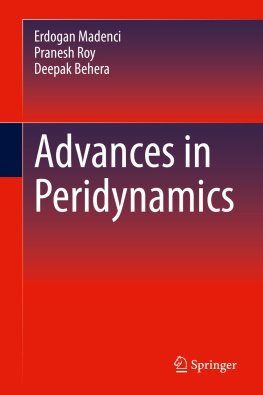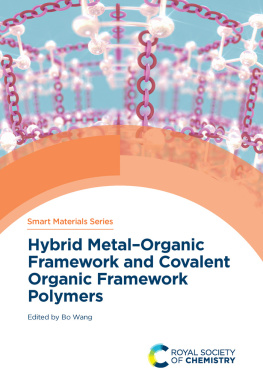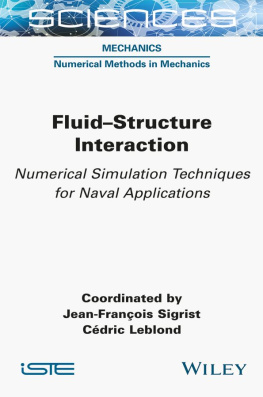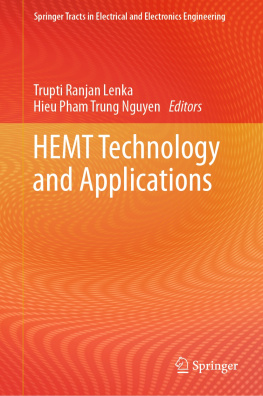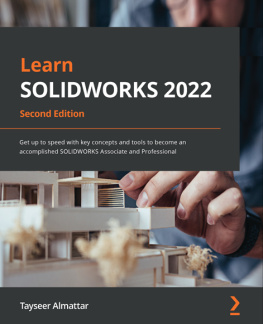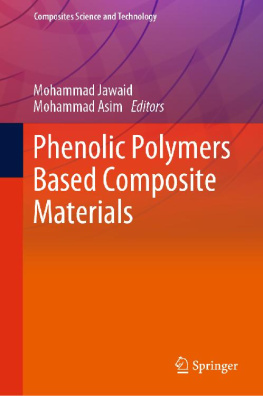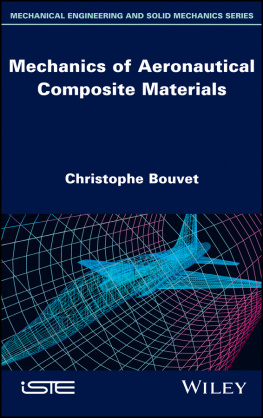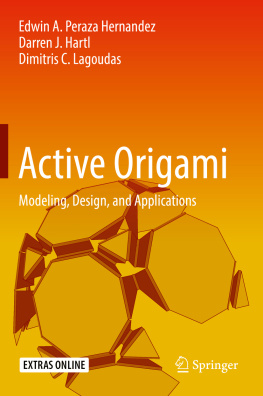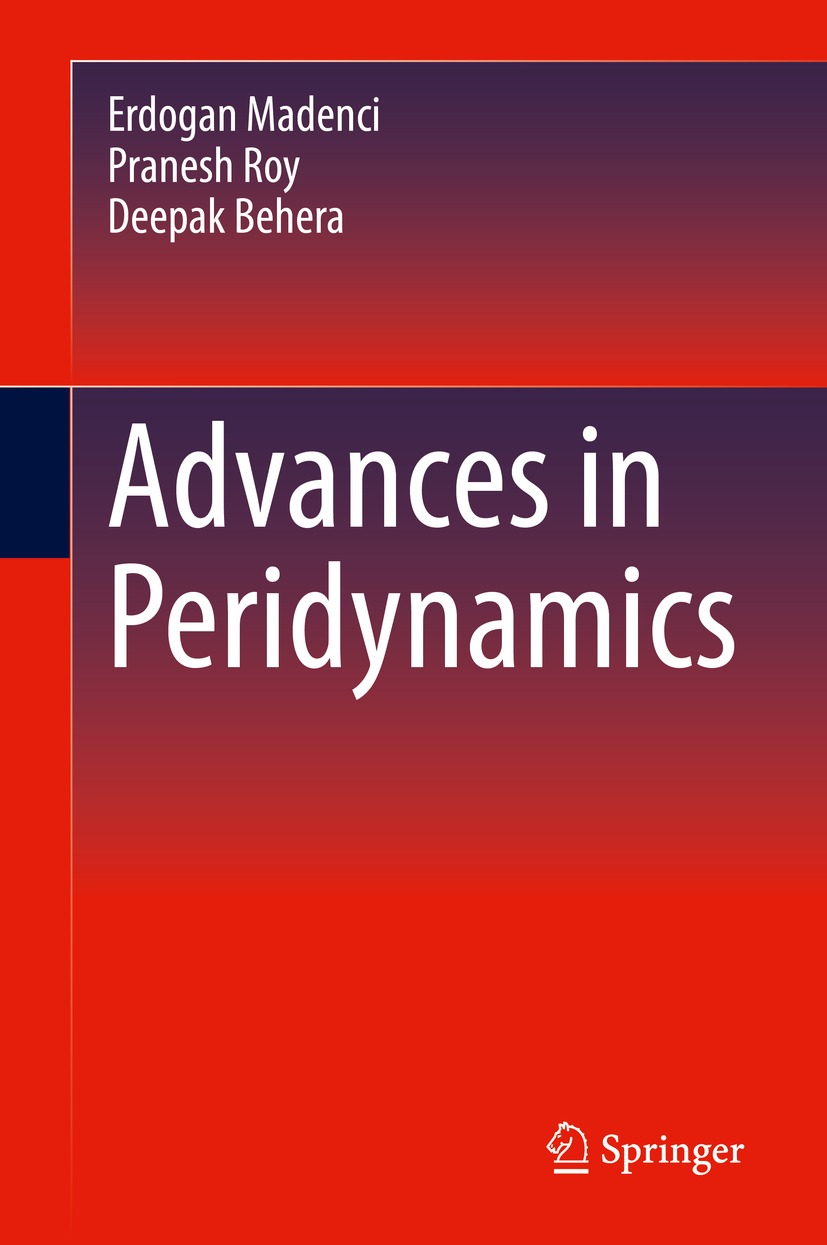Erdogan Madenci
Aerospace and Mechanical Engineering Department, The University of Arizona, Tucson, AZ, USA
Pranesh Roy
Department of Civil Engineering, Indian Institute of Technology (Indian School of Mines) Dhanbad, Sardar Patel Nagar, Dhanbad, Jharkhand, India
Deepak Behera
Aerospace and Mechanical Engineering Department, The University of Arizona, Tucson, AZ, USA
ISBN 978-3-030-97857-0 e-ISBN 978-3-030-97858-7
https://doi.org/10.1007/978-3-030-97858-7
The Editor(s) (if applicable) and The Author(s), under exclusive license to Springer Nature Switzerland AG 2022
This work is subject to copyright. All rights are solely and exclusively licensed by the Publisher, whether the whole or part of the material is concerned, specifically the rights of translation, reprinting, reuse of illustrations, recitation, broadcasting, reproduction on microfilms or in any other physical way, and transmission or information storage and retrieval, electronic adaptation, computer software, or by similar or dissimilar methodology now known or hereafter developed.
The use of general descriptive names, registered names, trademarks, service marks, etc. in this publication does not imply, even in the absence of a specific statement, that such names are exempt from the relevant protective laws and regulations and therefore free for general use.
The publisher, the authors and the editors are safe to assume that the advice and information in this book are believed to be true and accurate at the date of publication. Neither the publisher nor the authors or the editors give a warranty, expressed or implied, with respect to the material contained herein or for any errors or omissions that may have been made. The publisher remains neutral with regard to jurisdictional claims in published maps and institutional affiliations.
This Springer imprint is published by the registered company Springer Nature Switzerland AG
The registered company address is: Gewerbestrasse 11, 6330 Cham, Switzerland
Preface
Peridynamics (PD) started gaining approval in the solid mechanics community since its inception at Sandia National Laboratories by Dr. Stewart A. Silling in 2000. It dispenses with the principle of local action, a fundamental axiom in the classical continuum mechanics (CCM) which permits contact interaction only. PD permits long-range interactions occurring over a finite domain which makes it a nonlocal continuum theory. The governing equations of PD are integro-differential in nature and do not require the smoothness of field variables. This is a significant improvement over CCM which involves partial differential equations and does not allow non-smooth solutions by its very construction.
Finite element solutions of governing equations of CCM face difficulties whenever cracks appear in the material body. Meshfree methods, e.g., smoothed particle hydrodynamics (SPH), reproducing kernel particle method (RKPM), also cannot solve this fundamental problem as they are numerical methods that solve the governing equations of CCM. PD, for the first time, offered a physically and mathematically consistent theory through which spontaneous emergence and propagation of cracks can be achieved. The integral nature of the governing equations in PD remains valid even if a crack appears. Over the past 20 years, a considerable number of research articles has been published on PD. The applications range from static or dynamic loading, failure of brittle, quasi-brittle, and ductile-type materials, multi-physics, and multi-scale problems, reduced dimensional structures, structured continua, etc. The success in accurately predicting crack propagation in various materials and for a large range of space, time, and loading scales, has established PD as an effective tool for engineers and scientists. Despite this initial success, PD is still new, and its applications are expanding in many areas.
The purpose of this book is to furnish some of these recent advances of PD theory and its applications with an emphasis on nonordinary state-based (NOSB) PD. PD theory, as originally conceived, was bond-based (BB) and limited to isotropic materials with a fixed Poissons ratio of 0.25. This limitation has been overcome through the introduction of state-based PD theory. State-based PD theory is of two types, namely ordinary state-based (OSB) PD and NOSB PD. In OSB-PD theory, one needs to propose constitutive equations and calibrate it with CCM based material properties as PD material parameters are not readily available experimentally. This procedure is cumbersome for most practical problems. However, for NOSB-PD, Dr. Stewart A. Silling proposed a method known as constitutive correspondence which offers a direct way of converting a CCM-based constitutive equation to its PD form. This approach uses a nonlocal definition of the deformation gradient . Although the constitutive correspondence approach is easy to implement, it involves a serious issue known as zero- energy modes which leads to spurious oscillations in the solution. Initially, researchers tried to resolve this issue by introducing zero energy control forces. This requires tuning of a penalty-like parameter which reduces the extent of the oscillations in the solution field. Later, it was realized that the source of this unphysical result lies in the integral-based definition of the nonlocal deformation gradient. Many methods have been proposed since then to correct the definition, e.g., generalized nonlinear SethHill strain measures, stress point method, penalty approach, modified deformation gradient with the bond-based term, sub-horizon approach, bond-associated deformation gradient. In this book, we follow the bond-associated (BA) deformation gradient to eliminate zero-energy modes using the weak form of PD and PD differential operator (PDDO). The PDDO, developed by Dr. Erdogan Madenci, provides a bridge between differentiation and integration. Any order derivative term can be converted to its nonlocal representation . On the other hand, the weak form of PD enables the imposition of boundary conditions in PD. Another issue with traditional NOSB-PD is the boundary kinks which usually appear near the boundary patches used for the imposition of boundary conditions. This kink-induced stress concentration is a major issue in plasticity and creep problems where boundaries fail unphysically. We present an approach that eliminates such displacement kinks, making PD effective in such problems.
This book begins with an overview of the fundamentals of PD and PDDO. It discusses the shortcomings of the current PD models and proposed refinements. The efficacy of the BA PD model is demonstrated through numerical examples concerning quasi-static and dynamic loading. The weak form of PD is derived to impose the boundary conditions. The BA PD model is used to study finite deformation in polymers and visco-hyperelastic materials. A significant improvement of PD is proposed to impose boundary conditions directly and to eliminate the displacement kinks near the boundary. The approach is applied to study thermoelastic, plastic, and creep deformation. The PD theory for axisymmetric structures and beams with finite deformation is systematically derived by using the balance laws. They are validated against experimental observations and benchmark problems. The BB PD with rotation kinematics for isotropic materials is considered to eliminate the shortcomings in the original BB PD model. The approach is extended to composite materials, and the capability is demonstrated by considering failure predictions. Performing PD analysis is computationally expensive due to its nonlocality. Coupling PD with finite elements provides a way forward to achieve computational efficiency. An approach based on virtual work is proposed to couple PD and FEM without the need of a transition region. The governing equations concerning BB PD are implemented in ANSYS, a commercially available software. Recently, machine learning and neural networks attracted substantial interest in many engineering applications, A PD-based physics-informed neural network (PINN) is presented for the solution of deformation in a domain subjected to indentation by a rigid punch and identification of material parameters

